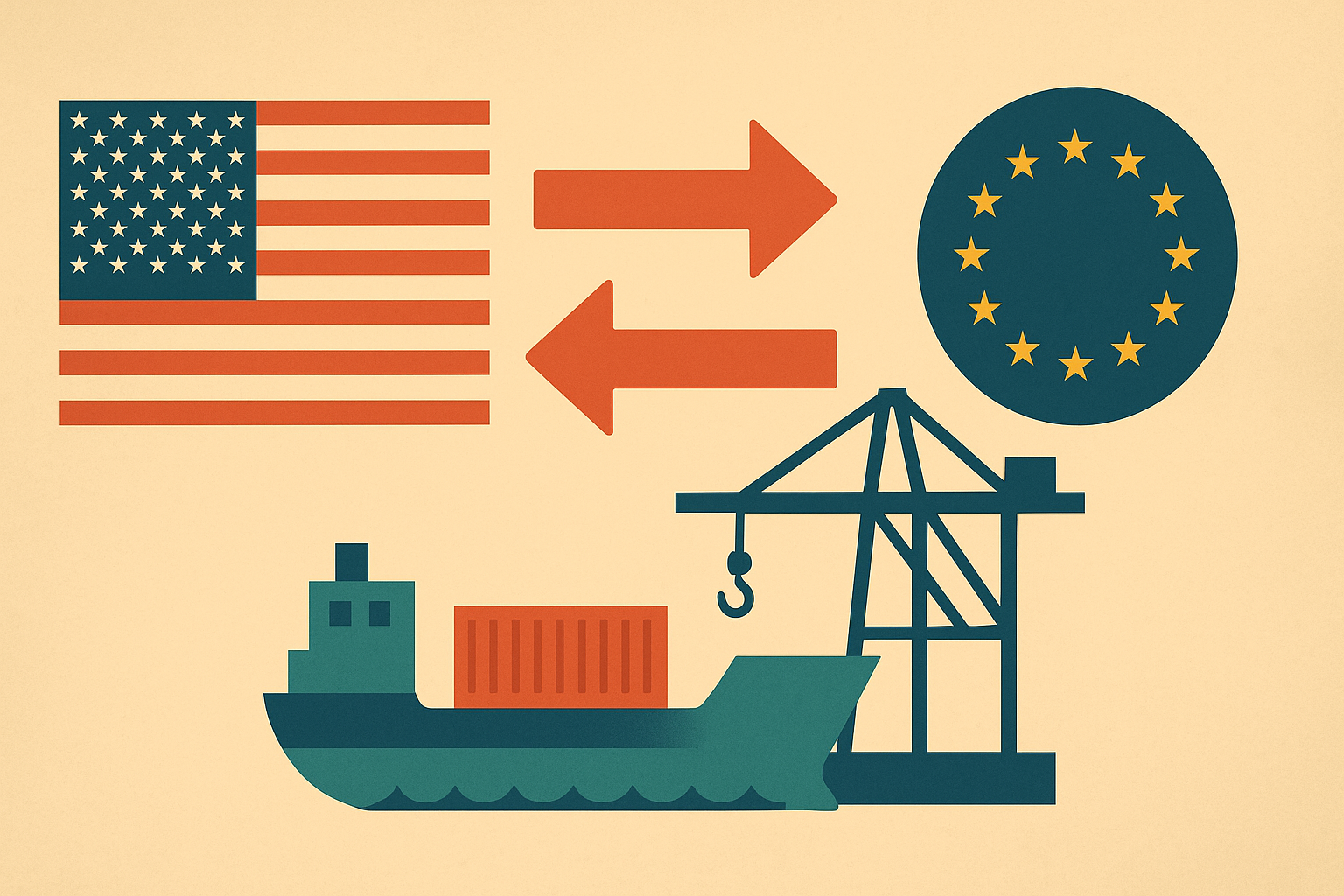The European Union has announced the suspension of its planned retaliatory tariffs on the United States, signaling progress toward finalizing a politically sensitive trade agreement brokered last month between European Commission President Ursula von der Leyen and US President Donald Trump.
The decision comes as the EU and US continue working out the technical details of the deal, which includes a reduction in tariffs on European car exports and other key products. Although the full agreement has yet to be formalized in writing, both sides are moving forward with implementation.
US Tariffs to Begin, But EU Holds Off Retaliation
Last week, President Trump signed an executive order imposing a 15% tariff on most EU imports, set to take effect on Friday. The new rate, while still significant, represents a partial concession from the current 27.5% tariff on European cars — a major point of contention, particularly for Germany.
In response, the EU has put on hold its own plan to raise tariffs on €93 billion worth of US goods, which was scheduled to begin Thursday had talks collapsed. “The suspension [of retaliatory tariffs] is a reflection of the fact that a political agreement has been reached,” a senior EU official said, adding that the measures are being “put back into the freezer” but could be reactivated if needed.
Outstanding Issues: Car Parts, Wine, Steel, and More
Key elements of the deal still require negotiation. Chief among them is the treatment of EU-made cars with components sourced from outside the bloc, particularly from China. The US is reportedly pushing for stricter controls on third-country content, with discussions ongoing.
The EU is also lobbying for exemptions for specific sectors from the 15% tariff, including wine and spirits (a demand led by France and Italy), as well as chemicals and medical devices. While the US has pushed back on including wine and spirits, some agreement has been reached in areas like aircraft and aircraft components.
Steel, Aluminium, and Tariff Rate Quotas
Another unresolved area concerns European steel and aluminium exports, which currently face tariffs as high as 50%. The EU is advocating for a tariff-rate quota system — allowing traditional export volumes to enter the US at lower rates while applying higher tariffs to excess shipments. Although a political understanding has reportedly been reached, formal agreement from Washington is still pending.
Political Reactions: Divisions Within the EU
The proposed trade deal has generated internal controversy within the EU. France and Germany have criticized the terms, with German Finance Minister Lars Klingbeil calling the EU’s negotiating position “too weak” and saying Germany “can’t be satisfied with the result.”
In response, the European Commission defended its approach, emphasizing that all steps were taken with the approval of EU member states and that the agreement had helped avert a broader trade war. One EU official noted that the deal also prevented the US from acting on threats to withdraw security guarantees from Europe.
Strategic Concessions
The broader agreement includes EU investment pledges and increased purchases of US weapons and energy products, part of a larger strategy to preserve transatlantic relations amid growing global trade tensions.
“This is not a perfect deal, but it’s the better choice,” said a senior EU official. “We’re very clearly operating in a second-best world.”
Although the agreement is not yet final, parts of it — including tariff reductions — will ultimately require formal approval by a majority of EU member states once the text is finalized. For now, the suspension of retaliatory measures marks a cautious step forward in one of the most significant EU-US trade negotiations in recent years.








